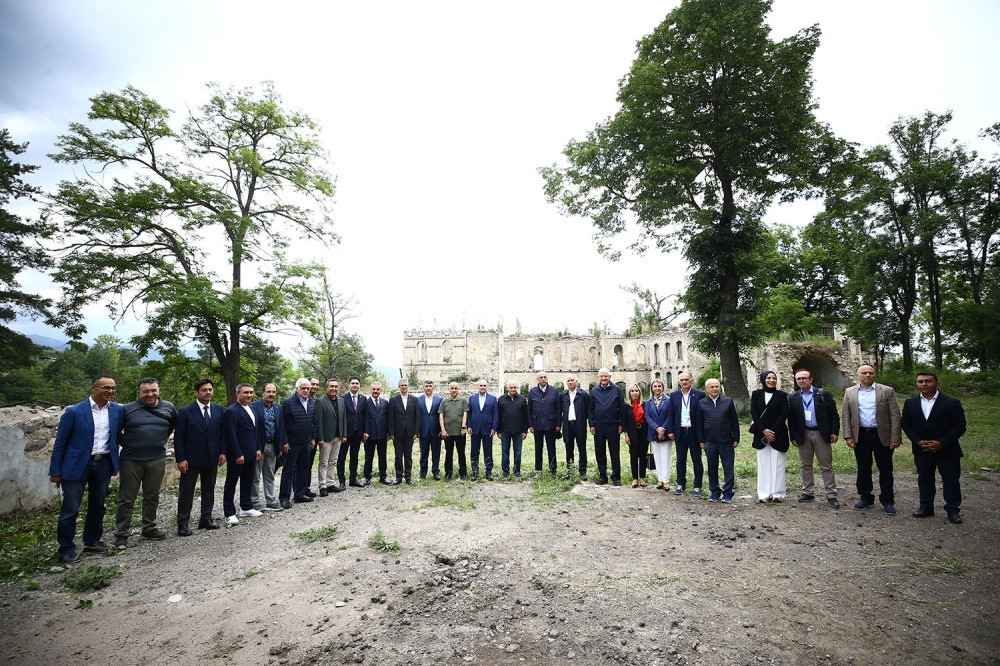Participants of the international conference "Azerbaijan-Turkey strategic alliance is a source of peace and stability for the Caucasus and the region" dedicated to the first anniversary of the Shusha Declaration visited the Azerbaijani cultural capital Shusha on June 14.
YAP told APA that during the visit, the guests first arrived in Shusha city central square, where the shot statues of famous Azerbaijani personalities - Natavan, Bulbul and Uzeyir Hajibeyli were placed.
It was reported that during the occupation, the Armenians wanted to take the statues to Armenia and melt them.
At the initiative of national leader Heydar Aliyev, the statues were taken from Armenia to Azerbaijan and kept in the yard of the Art Museum in Baku.
After the liberation of Shusha, the statues were returned to their original places.
Then the conference participants got acquainted with a 19th-century house belonging to Khurshidbanu Natavan, daughter of Mehdigulu khan Javanshir, a prominent Azerbaijani poet and the last ruler of Karabakh, one of the monuments in Shusha that was subjected to Armenian vandalism.
It was noted that the Shusha Music School, the first children's music school established in Azerbaijan on the initiative of Bulbul, the founder of Azerbaijani vocal art, was built in the early 1930s.
After a major overhaul of the building in 1987, the Karabakh branch of the National Museum of Azerbaijani Literature named after Nizami Ganjavi named after Khurshidbanu Natavan operated here.
It was noted that hundreds of rare pearls, paintings, collected in the museum after the occupation of Shusha by the Armenian armed forces,
Then the guests visited the walls of Shusha fortress.
They were informed about the history of Shusha and the construction of the castle walls.
It was said that the fortress, built by Karabakh khan Panahali khan, protected the city from foreign interventions for a long time and was a symbol of inviolability.
During the occupation, the castle walls were subjected to Armenian vandalism.
After the liberation of Shusha, the fortress was repaired.
At the end, the conference participants visited the Cidir plain.
It was noted that during the Great Patriotic War, our heroic soldiers bravely climbed the steep cliffs and liberated Shusha from occupation at the cost of their lives and blood.
Today, the Cidir plain has become a venue for spectacular events, just as it was before the occupation.
